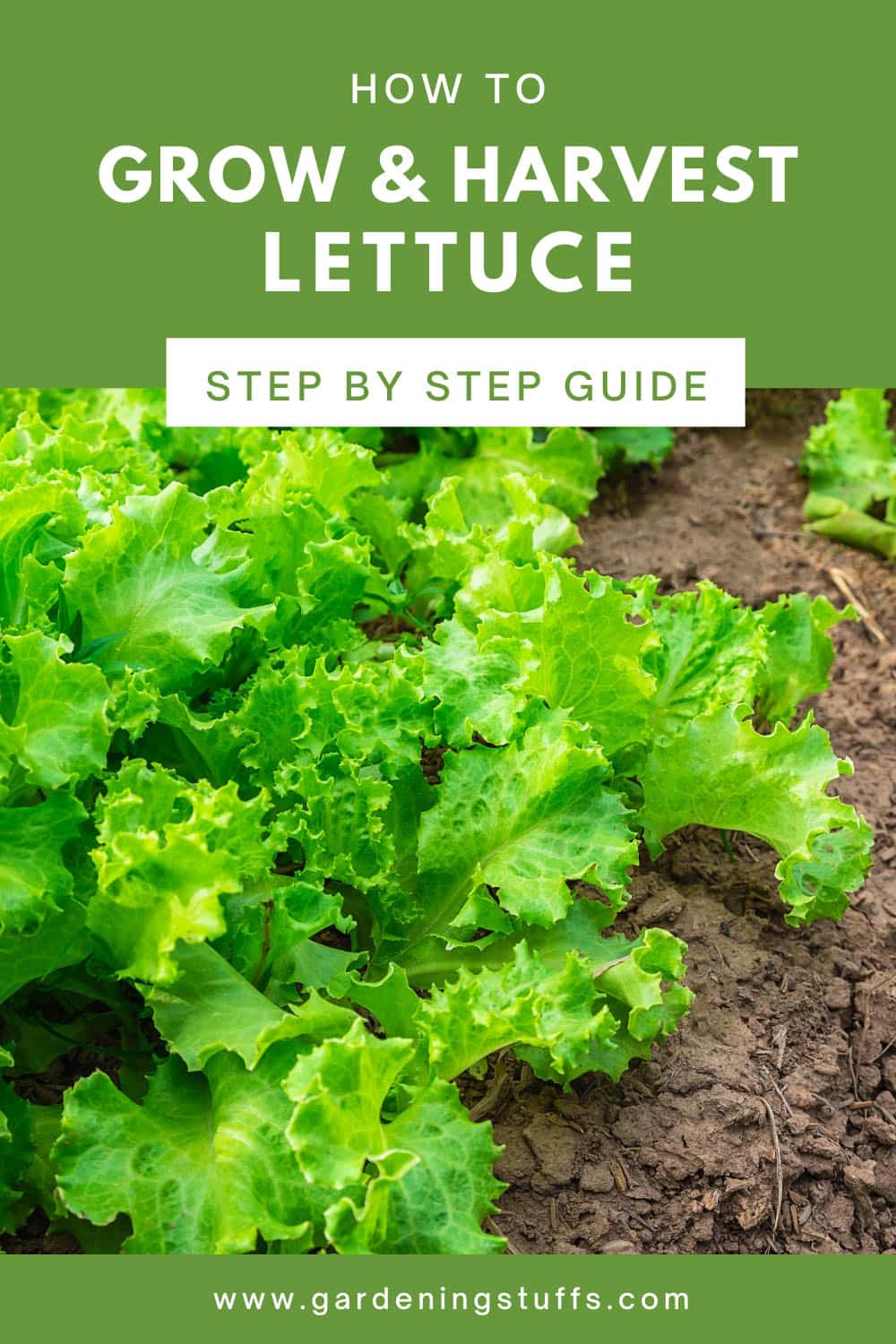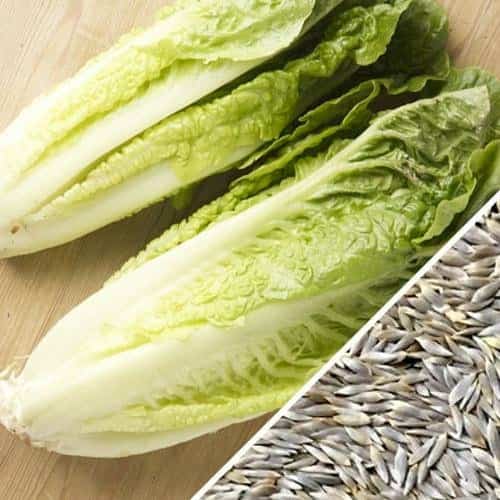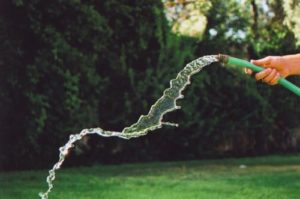If you’ve ever considered growing your own lettuce to liven up your salads, you may have found it daunting given all the different types. Luckily, all types of lettuce are fairly easy to grow and make a great starter for a vegetable garden. And they all have similar needs.
Read on to learn more about the different types of lettuce and how to grow them.
Table of Contents
Growing Lettuce
Lettuce is the most widely planted vegetable in the US and, as a staple in salads, it is in high demand. It grows well in cool conditions and doesn’t require a lot of specialized care, making it the ideal garden vegetable.
There are a number of varieties to choose from, so you’re sure to find one that’s suitable for your garden, or you could plant a selection.
Seeds now provides local, non-GMO lettuce seeds.
100% Heirloom/Non-Hybrid/Non-GMO, Seeds Now are full supporters of Safe Seed Pledge.
All seeds are pure heirloom non-hybridized varieties free from genetic engineering.
Varieties of Lettuce
The four most common types of lettuce grown by hobbyists are romaine, butterhead, head, and loose-leaf lettuce. Though they are very similar, there are a few things that sets each one apart.
Romaine Lettuce
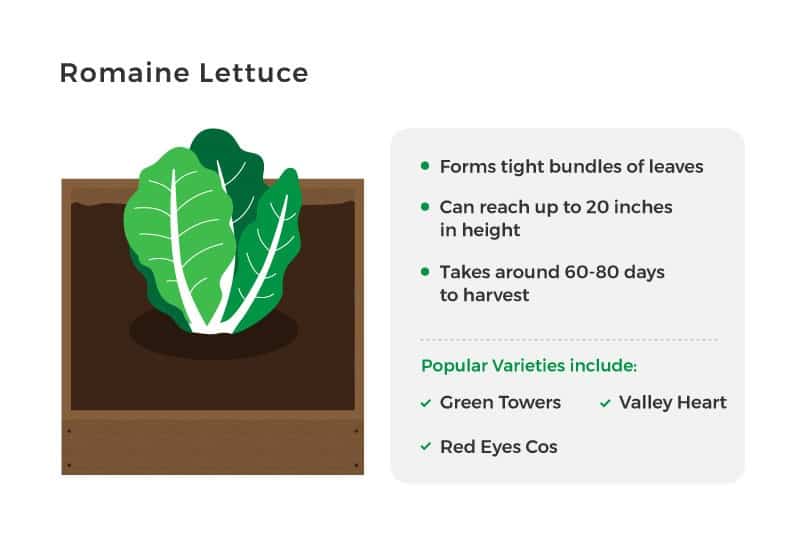
Romaine lettuce forms tight bundles of thick, sweet leaves and can reach up to 20” in height. It usually takes around 60 to 80 days to harvest which allows it to grow without bolting when the warmer weather hits. Some of the more popular varieties of romaine lettuce include Green Towers, Valley Heart and Red Eyes Cos.
Butterhead Lettuce
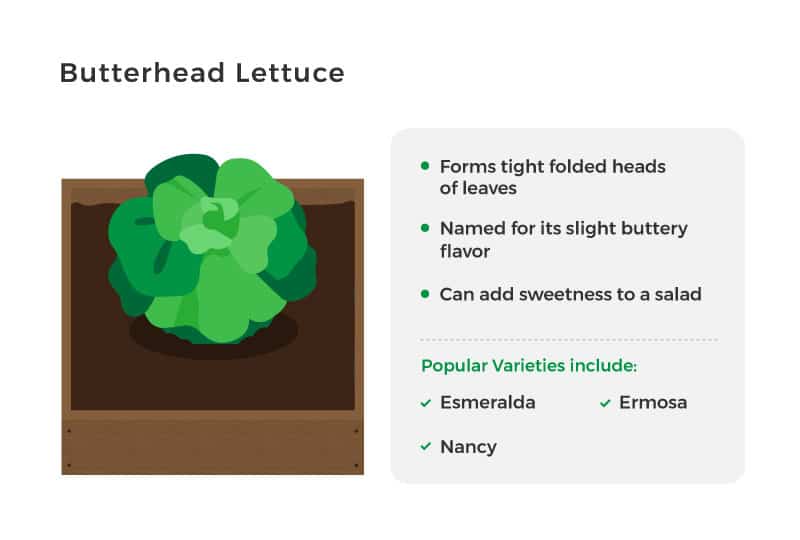
Butterhead lettuce produces tightly folded heads of tender leaves, of which the middle ones are self-blanching and white in color. It is named for its slight buttery flavor, and can add some sweetness to a salad. Some popular varieties of butterhead lettuce include Ermosa, Esmeralda, and Nancy.
Head Lettuce
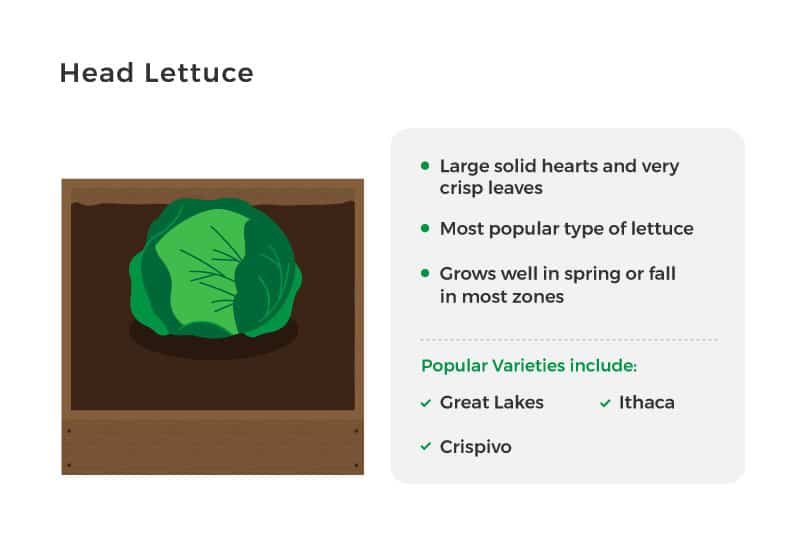
Head lettuce is probably the most popular type of lettuce, but also requires a bit more care than other varieties. It is best to plant head lettuce in the fall as, by avoiding the warmer weather, you can produce sweeter lettuce. The most popular varieties of head lettuce include Iceberg, Ithaca, Great Lakes, and Crispivo.
Loose-leaf Lettuce
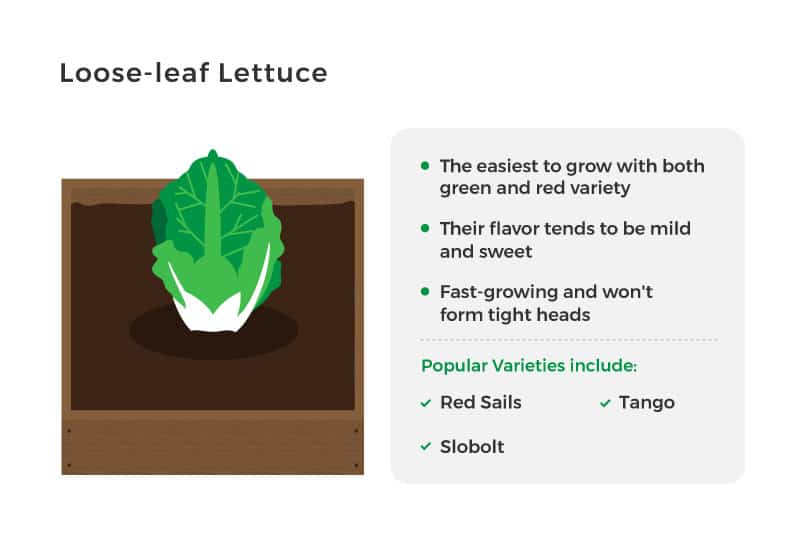
Loose-leaf lettuce is the easiest to grow, and there are both red and green varieties which are grown in much the same way. You can either grow them in rows to produce bundles of loose leaves, or sow them thickly in a garden bed and harvest early for young, tender lettuce. You can even get a few harvests from one planting. Some of the most popular loose-leaf varieties of lettuce include Red Sails, Tango and Slobolt.
Seeds now provides local, non-GMO lettuce seeds.
100% Heirloom/Non-Hybrid/Non-GMO, Seeds Now are full supporters of Safe Seed Pledge.
All seeds are pure heirloom non-hybridized varieties free from genetic engineering.
Step 1: How to Plant Lettuce
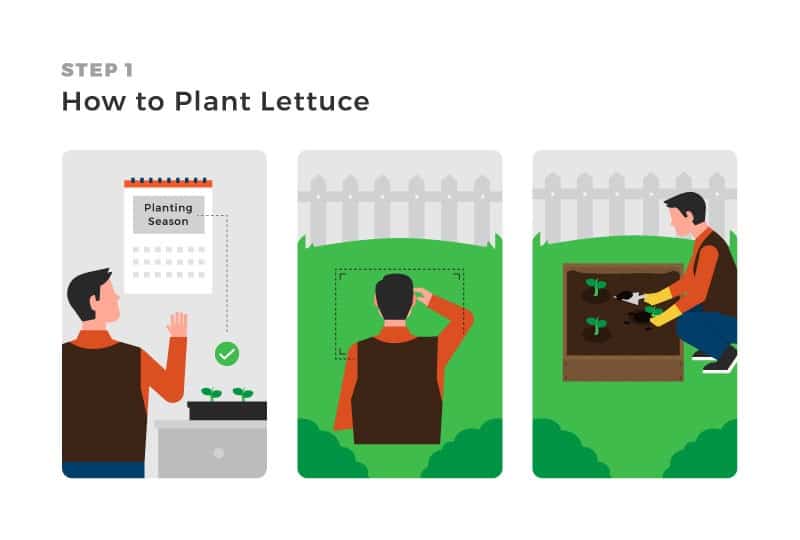
Planting lettuce is not at all difficult and there are just a few things you need to consider before getting started.
When to Plant Lettuce
Lettuce grows best in cool weather. Loose-leaf, romaine, and butterhead varieties can be planted in the spring as soon as soil is able to be worked. They will germinate at temperatures between 40 to 85°F and should be planted in batches 10 to 14 days apart, this way you will have an extended harvest. To prevent bolting, where the lettuce begins to flower, you should stop planting one month before the warm weather hits in summer.
Head lettuce, in contrast, should be started indoors and then transplanted in the spring after the last frost. By doing this, you can get a head start on the growing season.
Where to Plant Lettuce
Lettuce needs to be in a spot with plenty of sunlight.
It grows best in loose, cool soil that has good drainage. Compost and manure can be added to increase drainage and provide essential nutrients. Lettuce is sensitive to low pH so, if your soil is below 6.0, you may also need to add lime to bring the pH up.
Planting Your Lettuce
Lettuce should be planted in rows, with the seeds planted just ¼ to ½” deep. Rows should be spaced 12 to 18” apart, but how far apart you plant individual lettuces will depend on the type. Leaf lettuce seedlings only need 4” between them, while romaine and butterhead lettuce should be planted 6 to 8” apart.
Again, head lettuce should be started indoors. Keep them in small pots at first, planting the seeds shallow in the soil, and then transplanting them outside before the warmer weather. When moving them outside, you should plant them in rows that are 12 to 18” apart and allow 10 to 12” between each plant.
Step 2: Caring for Your Lettuce
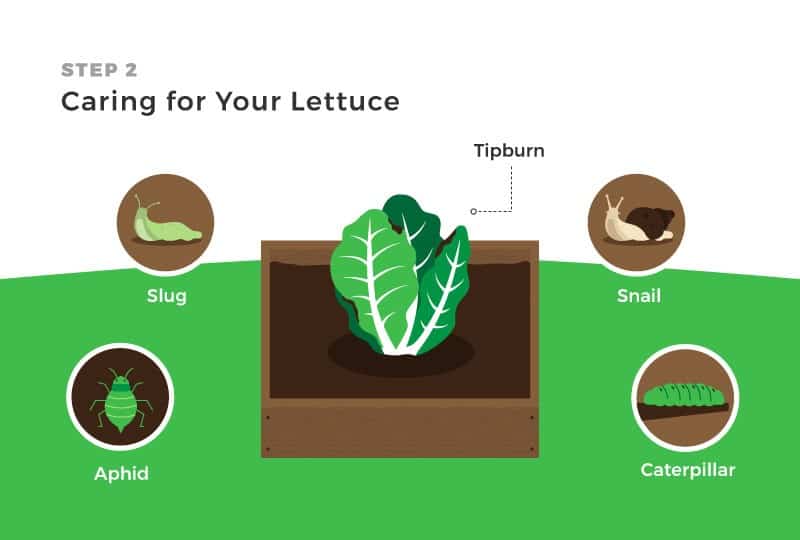
Unlike with most garden vegetables, when growing lettuce, you want to encourage leaf growth rather than root growth. This means the plants need light but frequent and consistent watering; just enough to keep the soil moist.
Common Pests and Diseases
As your lettuce grows, there are some common problems you’ll need to look out for. The sooner you catch these issues, the easier they’ll be to fix.
Aphids
Aphids are small, sap-sucking insects, and can greatly damage your lettuce patch. If you have an infestation, you will notice the leaves begin to curl and wilt, and may even be able to spot the aphids themselves hiding on the underside of your lettuce leaves.
If you do find yourself with an aphid problem, you can apply a horticultural soap or neem oil. But the best way to control aphids is to encourage their natural predators, ladybugs.
Slugs, Snails, and Caterpillars
Slugs, snails, and caterpillars love lettuce and can eat their way through the leaves quite quickly.
There are a number of ways to control these common pests. Insecticides are an option but, if you would prefer to stay away from chemicals, there are also a number of traps available.
Tipburn
Tipburn is a breakdown of the lettuce leaves and can be caused by an uneven distribution of calcium within the plant and is more common during times of rapid growth. If your lettuce is suffering from tipburn, you will notice it starting to brown and curl.
Once you notice tipburn, it’s easy to manage. Trim away any parts of the lettuce that have browned and ensure that you keep your watering consistent.
Step 3: Harvesting Your Lettuce
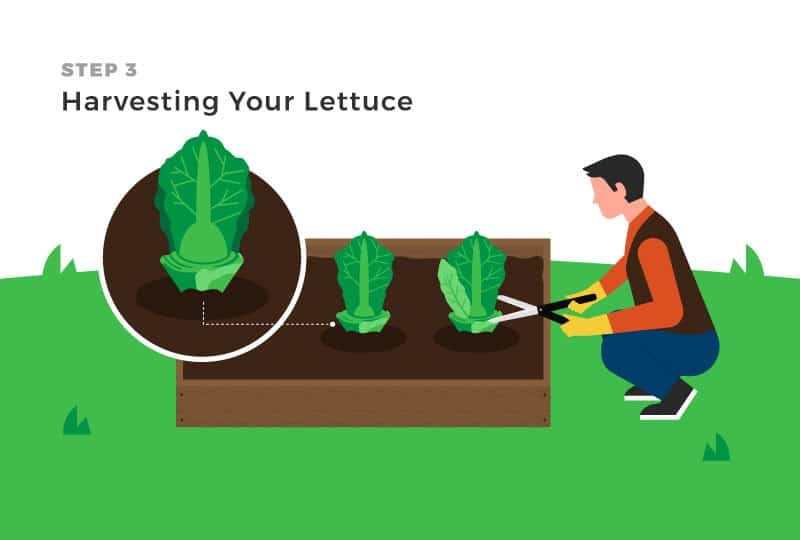
Lettuce is one of the easiest garden vegetables to harvest. Most are ready to be picked just 30 to 70 days after planting, once they’ve reached the size you’d prefer. And, for the best flavor, you should harvest your lettuce in the morning.
To harvest lettuce, simply cut it off near ground level. Or, for leaf lettuce, you can cut the whole leaf bundle at ground level or take a few leaves at a time as needed. When harvesting your lettuce in batches, it’s best to take every second plant, as this gives the remaining plants plenty of room to grow.
Final Thoughts
Now that you can see for yourself how easy it is to grow your own lettuce, I hope that you’re ready to give it a go. Planting a vegetable garden can be a great stress reliever and always having your own lettuce to hand is super convenient when you fancy a fresh, healthy salad.
In fact, if you choose to grow a few varieties, along with some tomatoes, you could even grow the whole salad yourself.
Seeds now provides local, non-GMO lettuce seeds.
100% Heirloom/Non-Hybrid/Non-GMO, Seeds Now are full supporters of Safe Seed Pledge.
All seeds are pure heirloom non-hybridized varieties free from genetic engineering.
